Charles David Keeling of Scripps Institution of Oceanography was the leading authority in establishing the global atmospheric carbon dioxide (CO2) record. In 1958, Keeling began measuring atmospheric CO2 concentrations from Hawaii’s Mauna Loa Observatory. Using rigorous analytical procedures, he revealed new information about natural and man-caused carbon trends.
USA
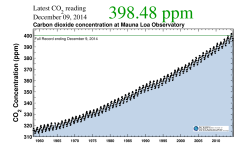

Frozen foods have become a staple of the modern diet. Freezing allows consumers to have access to foods previously unavailable or available only seasonally, and it provides convenience for many families. But frozen foods became commonplace only after World War II, in part due to research conducted at the Western Regional Research Center which helped determine the proper time and temperature at which various foods should be frozen to insure their quality and stability.
The plaque commemorating the research reads:

Instant mashed potatoes are commonplace on grocery shelves and have found wide use institutionally and in domestic and international food aid programs. The most successful form of instant mashed potatoes resulted from the flake process developed in the 1950s and 1960s at the Eastern Regional Research Center, a United States Department of Agriculture facility outside of Philadelphia. The process for reconstituting instant mashed potatoes devised at this facility utilized dehydration technology.
The first commercial circulating fluid bed reactor, PCLA #1 (Powdered Catalyst Louisiana), went on stream on May 25, 1942, in the Baton Rouge Refinery of the Standard Oil Company of New Jersey (now ExxonMobil Corporation). This first use of powdered catalysts in continuous operation allowed the efficient cracking of heavy gas oils to meet the growing demand for high-octane fuels. Today, fluid bed reactors are in use worldwide for the manufacture of fuels, chemical intermediates and plastics.
The plaque commemorating the development reads:
Era_date_from:
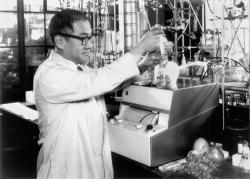
Flavor—encompassing both aroma and taste—provides the defining characteristic of how we experience food. Flavor has long been an enigma to scientists: Aristotle described two categories of taste, sweet and bitter. Today we recognize five basic tastes in food: sweetness, saltiness, sourness, bitterness and umami (savory). But what are the scientific components of flavor, and how can flavor be studied, quantified and replicated?

The story is so improbable it defies belief: a soil sample from Japan stops suffering in Africa. It starts when a scientist discovers a lowly bacterium near a golf course outside Tokyo. A team of scientists in the United States finds that the bacterium produces compounds that impede the activity of nematode worms. It is developed into a drug that wards off parasites in countless pets and farm animals, averting billions of dollars in losses worldwide.
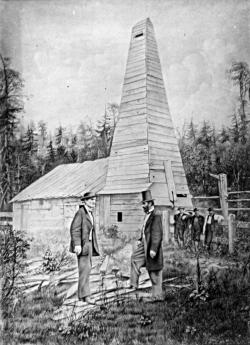
Long before Texas gushers and offshore drilling, and a century before oil wells dotted Arabian sands and rose out of Venezuelan waters, the center of petroleum production was western Pennsylvania. In the middle of the 19thcentury two developments occurred that guaranteed Pennsylvania’s dominance: The construction, in Pittsburgh, of the first still to refine crude oil into kerosene for use in lighting, and the drilling of the first oil well in Titusville, Pennsylvania.

DayGlo fluorescent pigments, a new class of pigments based on fluorescent dyes and polymeric materials, were developed between the 1930s and 1950s by scientists at Switzer Brothers, Inc. (now Day-Glo Color Corp.). These pigments absorb various light frequencies (visible and invisible to the human eye) and reemit them, producing intense visible colors that appear to glow, even in daylight.
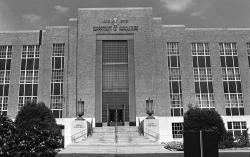
By the 1950s, synthetic fabrics - often wrinkle resistant and flame retardant - began to overtake cotton as the dominant U.S. textile fiber. To reverse this trend chemists and chemical engineers at the Southern Regional Research Center initiated research to modify cotton chemically. Their efforts in developing agents that crosslinked the cellulose fibers and in establishing crosslinking mechanisms led to improved durable press fabrics. SRRC studies also developed new agents that improved the durability of flame retardant cotton to laundering.
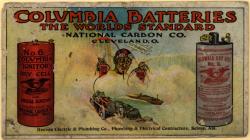
Imagine a world without batteries. It would be a much different world, in which the automobile and the telephone would have developed differently and probably later, a world without many of the conveniences of modern life and without some of the necessities. The battery, ever smaller and more powerful, defines much of our modern comforts and advances. There were many scientific and technological advances on the way to those smaller and more powerful batteries.
Innovations
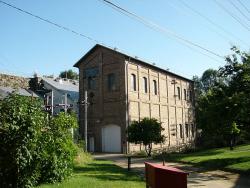
"The State [of California] agreed to construct the dam using convict labor for which consideration the State received a grant of land for the construction of a prison and water power rights from the impounded water ...; The work progressed slowly during the dry season by disinterested convict…
Read More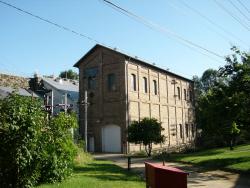
The historic Folsom Power House #1 marks one of the first successful uses of hydroelectric power in the world and the first successful transmission of power long distance (twenty-two miles to Sacramento). The old Folsom Power House still shelters the machinery generated to drive streetcars and…
Read More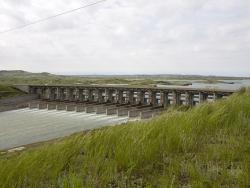
The Fort Peck Dam was a cornerstone project of the Works Progress Administration of Franklin D. Roosevelt's New Deal. It required the largest construction plant and workforce since the construction of the Panama Canal and peaked at 11,000 workers. It was the largest dam of any type in the world…
Read More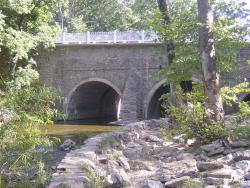
"For 273 years, the little stone bridge that carries Frankford Ave. across Pennypack Creek has been doing its humble job with a minimum of attention..."
- Gerald McKelvey, The Philadelphia Inquirer, September 16, 1970
Built more than a century before the reign of Napoleon,…
Read More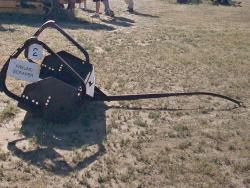
The Fresno scraper established the basis for the modern earthmoving scraper, being able to scrape and move a load of soil, then discharge it at a controlled depth. It quadrupled the productivity of manual labor, replacing hand shoveling of earth into horse carts.
James Porteous, a…
Read More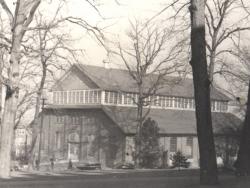
In 1907, John Fritz, known as the "Father of the Steel Industry in the United States," rejoined the Lehigh University Board of Trustees after an absence of a decade. He began the development of what would prove to be his greatest gift to Lehigh: a modern engineering laboratory and funding for…
Read More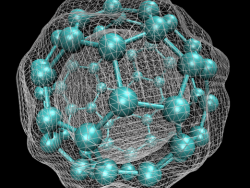
In early September 1985, a team of scientists discovered a previously unknown pure carbon molecule, C60, which they dubbed buckminsterfullerene. The name was chosen because the geodesic domes of Buckminster Fuller provided a clue that the molecule’s atoms might be arranged in the form of a…
Read More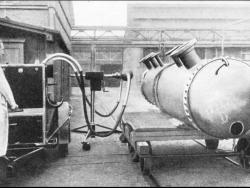
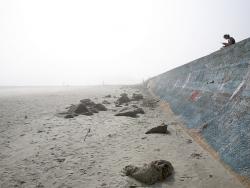
Galveston Island is a barrier island located two miles off the Texas coast. The island is about 3 miles wide at its widest and about 28 miles long. The Galveston Seawall extends over 10 miles along Galveston's oceanfront, protecting life and property against hurricanes and tropical storms. …
Read MoreThe Garfield Thomas Water Tunnel is a unique experimental facility for hydrodynamic research and testing. The 48-inch (1.2-meter) diameter water tunnel enables the research staff to conduct basic and applied investigations in the fields of cavitation, hydroacoustics, turbulence, transition,…
Read More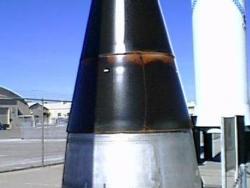
From 1956 to 1993, the GE Re-entry Systems facility was home to thousands of engineers and technicians who solved the problem of vehicles successfully reentering the Earth’s atmosphere. As described by aerospace pioneer Theodore Von Karman, “ Reentry… is perhaps the most difficult problem one…
Read More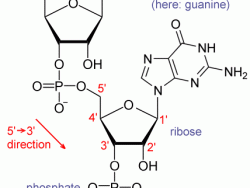
In 1961, in the National Institutes of Health Headquarters (Bethesda, MD), Marshall Nirenberg and Heinrich Matthaei discovered the key to breaking the genetic code when they conducted an experiment using a synthetic RNA chain of multiple units of uracil to instruct a chain of amino acids to add…
Read More
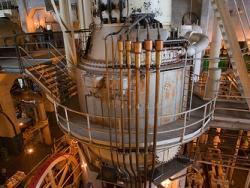

The Georgetown Steam Plant, a surprisingly complete and operable steam power plant after a career of nearly seventy-five years, was built in the early 1900s when Seattle's inexpensive hydroelectric power attracted manufacturers. Much of the power produced at this plant operated the streetcars.…
Read More
Gilman Hall, built in 1916-1917, accommodated a growing College of Chemistry by providing expanded research and teaching facilities for faculty and students specializing in physical, inorganic and nuclear chemistry. Work performed at Gilman Hall helped advance the fields of chemical…
Read More
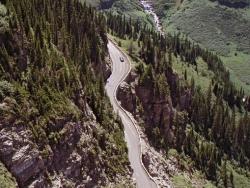
Considered one of the world's most scenic mountain drives, the two-lane Going-To-The-Sun Road through Glacier National Park was the first major road to be constructed directly over high mountain terrain, proving that roads did not need to be limited to mountain passes.
Glacier National…
Read More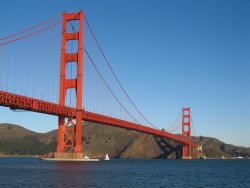
Put in service in 1937, this world-renowned bridge, conceived by Joseph Strauss and designed largely by Charles Ellis, was the longest single span (4,200 feet) in the world for a quarter century.
As with many civil engineering projects in their conceptual stages, naysayers scoffed at the…
Read More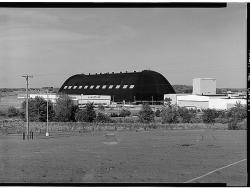
Wind dynamics were a major consideration in building such a huge structure. When winds blow against the building, they are deflected up over the roof, creating a partial vacuum that can draw the roof up with a force several times greater than the direct force of the wind. Wind tunnel testing on…
Read More

